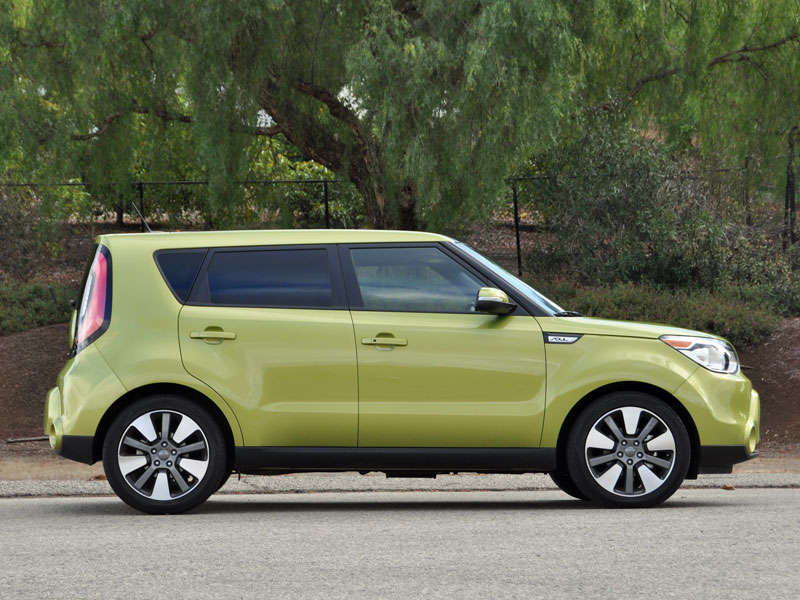Recent Articles
Popular Makes
Body Types
2014 Kia Soul Road Test and Review
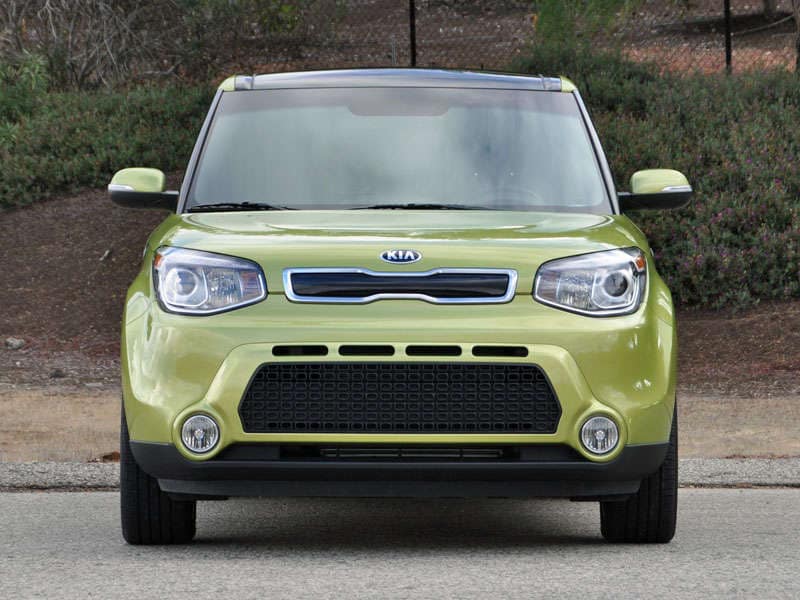
From my perspective, the redesigned 2014 Kia Soul is the most accurate automotive example of the phrase “class-above” that I’ve experienced to date. Lots of auto-industry marketers have been using “class-above” to describe their products and infer both quality and value, but where other vehicles whisper this status, the new Kia Soul screams it. And then clobbers you over the head just to make sure you got the message.
To provide backstory and perspective, I’ll tell you that I’ve always been a fan of the Kia Soul. From those ridiculous rapping rodents in the advertisements to its jaunty personality and expressive styling, the Soul has moxie at a price point where most vehicles all look and drive the same way. The Soul is distinctively different from every other vehicle on the road, and for that I love it. The first-generation Soul, though, required a degree of acceptance and forgiveness for its rudimentary level of mechanical sophistication and inexpensive interior materials in order to be appreciated for what it was: cheap, useful, stylish, dependable transportation with loads of personality.
The new Soul need not make apologies. It’s not perfect, and if you load one up with Exclaim trim and The Whole Shabang Package (yes, that is what they call it) it sure as hell ain’t cheap, but I wouldn’t hesitate to park a 2014 Kia Soul in my own driveway.
2014 Kia Soul Road Test and Review: Models and Prices
If you’re on a budget, you’re going to want the base Soul, which stickers for $15,495*. If you can’t operate a manual transmission, though, Kia is going to vacuum another $2,000 out of your pocket for a 6-speed automatic. Additional upgrades include remote keyless entry, cruise control, and 16-inch aluminum wheels. Several dealer-installed accessories can be added to this car, too, but my recommendation is to put all this extra cash toward an upgrade to the Soul Plus model.
Priced at $18,995*, the Soul Plus gets a more powerful 2.0-liter engine and a standard 6-speed automatic transmission with an Active Eco driving mode, along with remote keyless entry, cruise control, a center storage console with an armrest, a rear seat center armrest with cupholders, and power outlets in the cargo area. This model also has turn signal indicators embedded into its outside mirrors, along with 17-inch aluminum wheels. Whether or not you feel like this list of stuff is worth $1,500 more than the cost of a base Soul with the optional automatic is up to you.
What buying a Soul Plus does for you, though, is to open up a world of options. For example, if you really want to maximize fuel economy, the Eco Package ($400) is worth investigating. It adds Kia’s Idle Stop & Go technology and smaller 16-inch aluminum wheels wrapped in low rolling-resistance tires, and the result is a modest improvement in gas mileage ratings.
Additionally, the Soul Plus offers three additional option packages in a stair-step fashion. Buyers start with a UVO eServices Package ($500), which includes smartphone integration, automatic headlights and a reversing camera. An Audio Package ($1,400) requires UVO eServices and adds an 8-inch color touchscreen display with a navigation system, real-time traffic reports, HD Radio, a premium Infinity sound system, voice command technology, and pulsing speaker lights. Additionally, the Audio Package includes seemingly unrelated items in the form of automatic climate control, leatherette seat trim, piano black interior trim, satin chrome door handles, and a leather-wrapped steering wheel and gearshift knob.
The Soul Plus model’s Primo Package ($3,000) builds upon the Audio Package with leather seats, a 10-way power driver’s seat, heated and ventilated front seats, heated rear seats, and a heated steering wheel. This upgrade also includes Smart Key passive entry with push-button starting, LED interior lighting, a panoramic glass sunroof, and a set of fog lights.
At the top of the Soul lineup, the Exclaim model costs $21,095*. The extra outlay of $2,100 pays for UVO eServices technology, a reversing camera, a 10-way power driver’s seat, an auto-dimming rearview mirror, a glovebox cooling function, and a leather-wrapped steering wheel and shift knob. Exterior enhancements include body-color trim, power folding side mirrors, automatic projector beam headlights, fog lights, LED positioning lights, and LED taillights. The Soul Exclaim also rolls on exclusive 18-inch aluminum wheels.
A Sun & Sound Package ($2,600) adds the panoramic glass sunroof, the 8-inch color touchscreen display with navigation, the Infinity premium audio system, HD Radio, pulsing speaker lights, and automatic climate control. The Whole Shabang Package ($2,600) requires the Sun & Sound Package, and then adds leather seats, heated and ventilated front seats, heated rear seats, a heated steering wheel, Smart Key entry with push-button start, Supervision gauges, and HID headlights with auto-leveling.
My Soul Exclaim test car, coated in Alien paint, had The Whole Shabang Package and wore a window sticker of $26,195*. Additional upgrades for the 2014 Soul, depending on trim level, include a cargo net, a cargo tray, premium carpeted floor mats, an auto-dimming rearview mirror with a compass and a universal garage door opener, an interior lighting kit, mudguards, a rear spoiler, wheel locks, and more. Check every box, and a loaded-up Soul costs $27,960*.
* All prices include a destination charge of $795
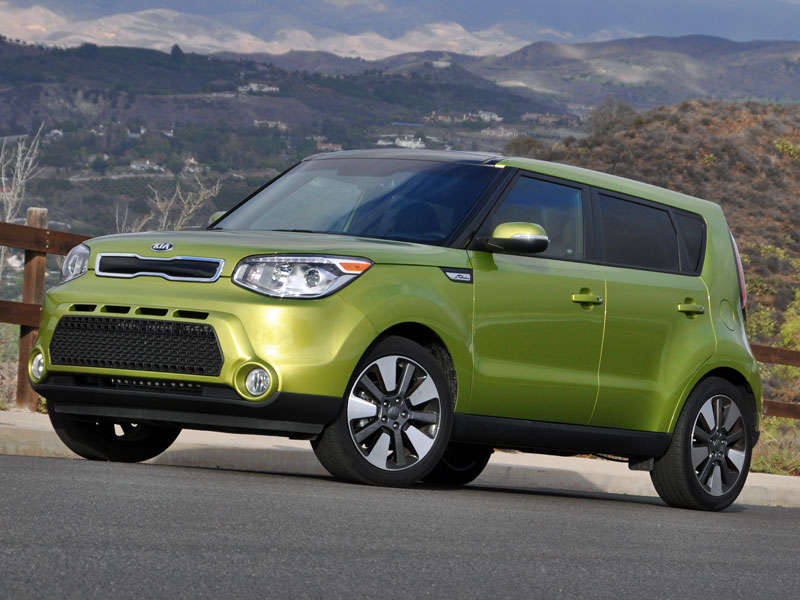
2014 Kia Soul Road Test and Review: Design
- Completely redesigned yet instantly familiar
- Takes “bulldog” cues from Kia Track’ster Concept
- Longer, wider, shorter in height
- Available LED positioning lights
- Available LED taillights
- Improved interior materials
- Exclusive controls and switchgear
- Available Supervision instrumentation
While I don’t necessarily like certain details of the Soul’s styling, I am a fan of the overall look, in particular the floating roof and wrap-around appearance for the windshield. Line the new Soul up to the old one, and it looks far more modern and substantial. Buyers of the base version, though, need to pony up for new wheels and tires, because the stance just isn’t right. The Soul Exclaim’s 18-inch wheels perfectly fill the car’s swollen fenders.
The interior is where the biggest improvements occur. From materials and layout to switchgear and displays, the new Soul officially transitions from econocar territory and into the mainstream. Look closely at a loaded Soul Exclaim, which isn’t cheap in terms of price, and you’ll discover that it isn’t cheap in terms of execution, either. There is zero evidence of cost-cutting inside of this vehicle, which makes it a bargain at its window sticker.
By the way, Kia, I love those tweeter speaker towers. They remind me of a Bang & Olufsen system in an Audi, and the engine’s classy-looking push-button ignition switch is also satisfyingly German in execution.
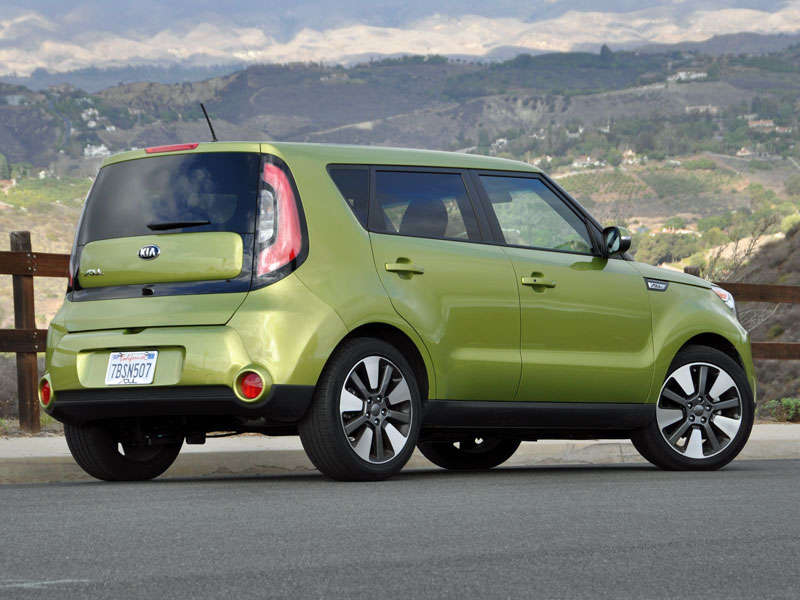
2014 Kia Soul Road Test and Review: Comfort and Cargo
- Larger interior
- Quieter cabin
- Additional cargo space
Kia says the new 2014 Soul benefits from increased front legroom, headroom, and shoulder room, while delivering lower seat hip points and lower step-in heights for everybody. The result is a car that it easy to get into and out of, and which feels really roomy inside.
I found the Soul’s front seats quite comfortable, especially the 10-way power driver’s seat. Soft-touch upper door panels and armrests help cement this impression, and the driver grips a satisfyingly thick-rimmed steering wheel. The new Soul’s windshield pillars are also thinner than before, for an improved view out, and occupants sit up remarkably high, like in a crossover suv.
For 2014, the Soul also benefits from increased rear legroom, and there was plenty of space for my oversized self in the back seat. However, that doesn’t mean that I found the rear quarters to be comfortable. The rear seat’s bottom cushion is flat, lacking in thigh support. The backrest is also angled in such a way as to force occupants to slouch. There’s all kinds of room in the Soul, but for me to deem this car’s rear seat comfortable, the bottom cushion needs to be raised or angled for greater thigh support, or the backrest needs to offer a more vertical position than it does now. That said, my young children didn’t complain about anything except for how hard it was to see out of the windows.
In addition to more passenger room, the redesigned 2014 Soul adds additional cargo capacity. Pop the rear liftgate to access 18.8 cu.-ft. of cargo space, measured if someone stacks stuff to the roof. Remove the cargo floor and the compartmentalized tray beneath it, and space expands to 24.2 cu.-ft.
If you don’t need to use the back seat for people, it is easy to expand the cargo space. Pull on the seat release, flop the seatbacks down, and you’ve got 49.5 cu.-ft. of volume. Remove the rear cargo tray, and maximum space measures 61.3 cu.-ft.
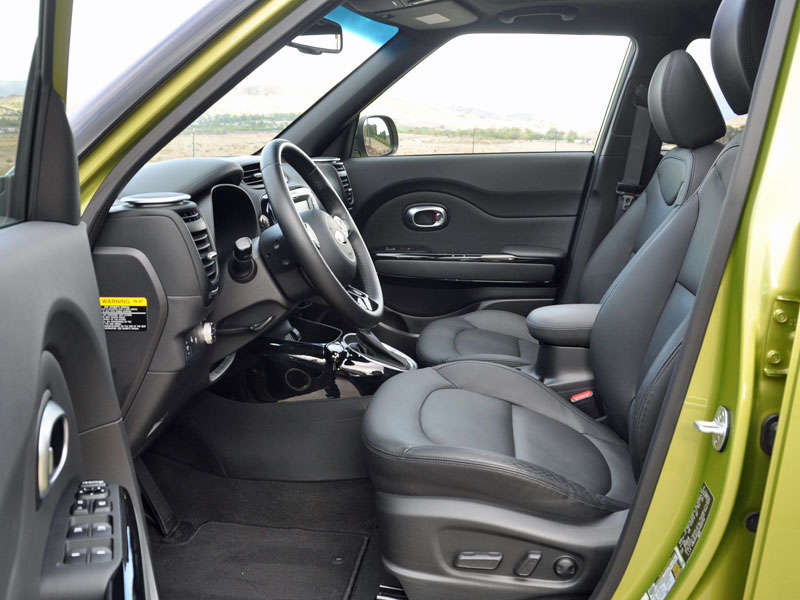
2014 Kia Soul Road Test and Review: Features and Controls
- Available 8-inch UVO eServices infotainment system
- Available Pandora Internet radio access
- Available panoramic glass sunroof
Though Kia’s UVO eServices system is a comprehensive one offering many features, it is not complicated to use. I’m not the sharpest of men, but I had no trouble quickly pairing my iPhone to the system, downloading my contacts, making and receiving calls, or launching and streaming Pandora. Beyond that, the UVO system offers a wide range of customization via numerous touchscreen menus. Simple, easy, done.
My test car’s Infinity audio system sounded terrific, too, especially with the sound centered in the rear seat. I really appreciate that Kia includes power/volume and tuning knobs, and that the buttons flanking the wide 8-inch display screen are logically grouped and clearly marked. Additionally, the Soul includes easy access to power outlets, a USB port, and an auxiliary audio input jack, all sitting in a deep bin with a rubbery liner that is perfect for holding smartphones and portable music players.
Get the Soul Exclaim, and it features crisp, clear Supervision gauges separated by an information display with multiple screens conveying plenty of information about the vehicle. As for storage, each door panel has a bottle holder, the center console is of a decent size, there’s a thickly padded overhead compartment for sunglasses, and the glovebox is positively enormous.
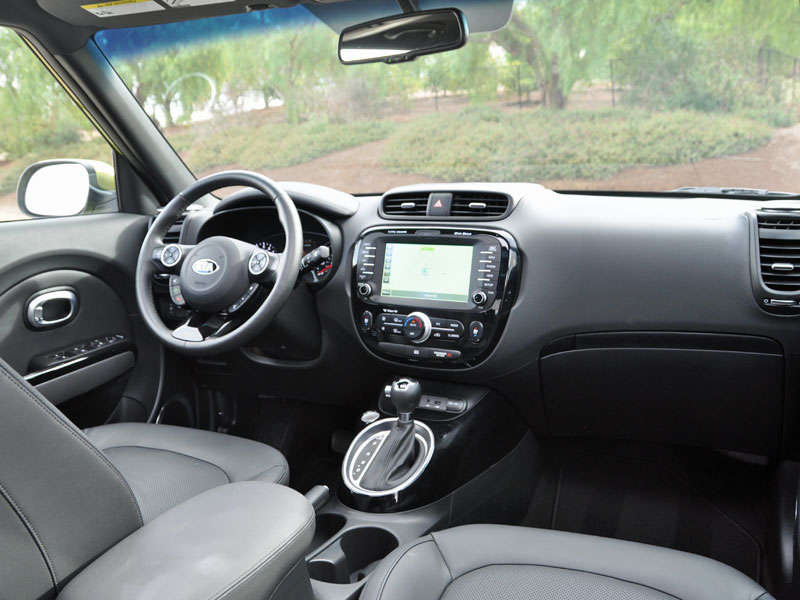
2014 Kia Soul Road Test and Review: Safety and Ratings
- Available reversing camera
- Available Crash Notification Notice service
- Available 911 Connect service
If there’s an area where the new 2014 Soul doesn’t deliver on its “class above” status, it’s with regard to safety features. Aside from the basics found on every modern vehicle, a reversing camera and UVO eServices are optional for the Soul Plus and standard for the Soul Exclaim. The eServices upgrade includes 911 Connect and Crash Notification Notice, which helps occupants to actively or passively reach emergency assistance personnel, and to speed rescuers to the Soul’s exact location if necessary.
What’s missing from the Soul, especially those models with higher price tags, are a blind spot warning system, a lane departure warning system, rear cross-traffic alert, and parking sensors. Kia will need to rectify this situation, and without jacking prices up much further than they already are.
As this review was written, the National Highway Traffic Safety Administration (NHTSA) had not performed crash tests on the redesigned Soul. The Insurance Institute for Highway Safety (IIHS) performed early testing on the new 2014 Soul, and it rated “Good” in all assessments except for the small overlap test, which had not yet been performed as this review was written.
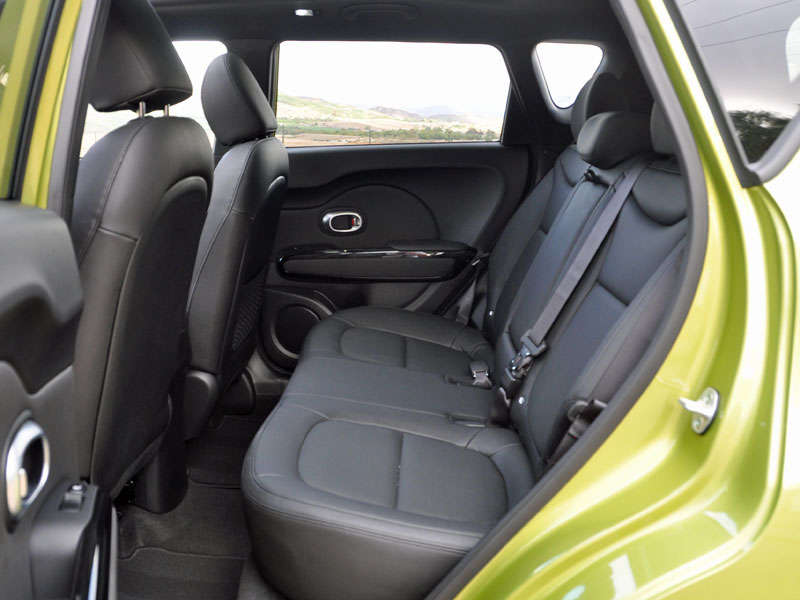
2014 Kia Soul Road Test and Review: Engines and Fuel Economy
- Stiffer, longer, wider chassis
- Standard FlexSteer technology
- Major suspension upgrades
- Improved ride and handling
- Direct fuel injection for 2.0-liter engine
- Both engines make torque lower in rev range
A direct-injected, 1.6-liter 4-cylinder engine is standard for the base version of the Soul, rated to make 130 horsepower at 6,300 rpm and 118 lb.-ft. of torque at 4,850 rpm. That’s adequate in a vehicle weighing 2,714 pounds, and nothing more. A 6-speed manual gearbox is standard equipment, while 6-speed automatic is optional. The automatic includes a Sportmatic manual shift gate and an Active Eco system that calibrates powertrain response in a manner that encourages more fuel-efficient driving.
The Soul Plus and Exclaim models have a direct-injected, 2.0-liter 4-cylinder engine with the 6-speed automatic. This engine generates 164 horsepower at 6,200 rpm and 151 lb.-ft of torque at 4,000 rpm, more satisfying in this 2,837-lb. version of the Soul.
No matter which engine or transmission you choose, plan to get 26 mpg in combined driving, according to the EPA. Versions equipped with the optional Idle Stop & Go system do a little better, at 27 mpg. As usual when I test drive a Kia, I came nowhere close to these figures. Granted, it was an uncharacteristically blustery day when I conducted my testing, but I expected better than 23.6 mpg.
Like all 2014 Kia models, the Soul is equipped with industry-leading warranty coverage. The entire vehicle is protected for five years or 60,000 miles, the powertrain is guaranteed for 10 years or 100,000 miles, and Kia supplies free roadside assistance for five years with no mileage limit. Looking for added value? According to ALG, the new Soul retains its value better than any other vehicle in its class.
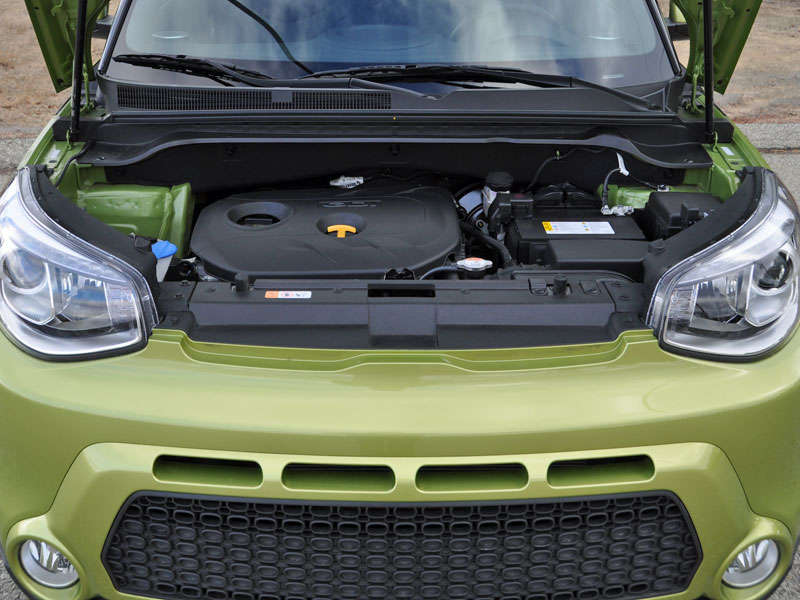
2014 Kia Soul Road Test and Review: Driving Impressions
You know what would be terrific? A Soul Turbo. Yank that turbocharged, 201-horsepower, 1.6-liter 4-cylinder engine out of the Forte SX, install it here, and Kia would have something really special.
Instead, the Soul’s 164-horsepower, 2.0-liter engine is merely acceptable. Though the car only feels slow or sluggish when the Active Eco system is engaged, there’s a palpable lack of zing to go along with the Soul’s jaunty and expressive personality. And since my testing indicates that fuel economy isn’t really one of the Soul’s strengths, I’d really rather have a turbocharger.
The 6-speed Sportmatic transmission does a good job of maximizing the power that is available, as long as the Active Eco system isn’t doing its part to try and maximize fuel economy. Drive the Soul up a mountain, and it holds a lower gear to make it easy to maintain highway speeds. Head down the other side, and the manual shift gate provides intuitive downshifts by pulling back on the lever, and executes upshifts by pushing forward. Paddle shifters would be nice to have, but I won’t ding Kia for failing to include them. After all, it’s not like there’s a turbocharged engine under the hood.
Kia’s structural and suspension upgrades are instantly evident to anyone with experience behind the wheel of the original Soul. The difference between the two is impressive, and the new Soul sounds and feels like a far more substantial and sophisticated machine. It is quieter, more responsive, isolates bumps and holes better, and comes across as worthy of “class above” status despite its fairly simplistic MacPherson strut front and torsion beam rear suspension setup.
On a twisty road, the Soul handles curves and kinks with ease but the front chairs still don’t hold the driver in place when approaching the limits of adhesion despite the fact that Kia says it has improved seat bolstering. Based on this test drive, it seems that perhaps Kia has been refining its FlexSteer technology since it first debuted. Nevertheless, I still believe that the Comfort setting delivers the best combination of feel, responsiveness, and effort levels. It feels the most natural throughout the range of motion, whereas Normal and Sport remain a little funky on-center and resistant when transitioning just off-center.
While the Soul performed better than I expected on a mountain road, the car still isn’t really in its element in this environment. This is a city car, one that loves to zip around corners, tuck into parking slot, and thread traffic. It’s fun to drive, just in a different way.
My only complaint about driving dynamics pertains to the Soul’s brakes. Equipped with vented front discs and solid rear discs, the setup should deliver a satisfying experience, but it doesn’t. In my test vehicle, the brake pedal offered little response upon initial application, and then would suddenly engage in grabby fashion. There was nothing smooth or progressive about it, and it was the only dissatisfying part of the Soul’s driving character.
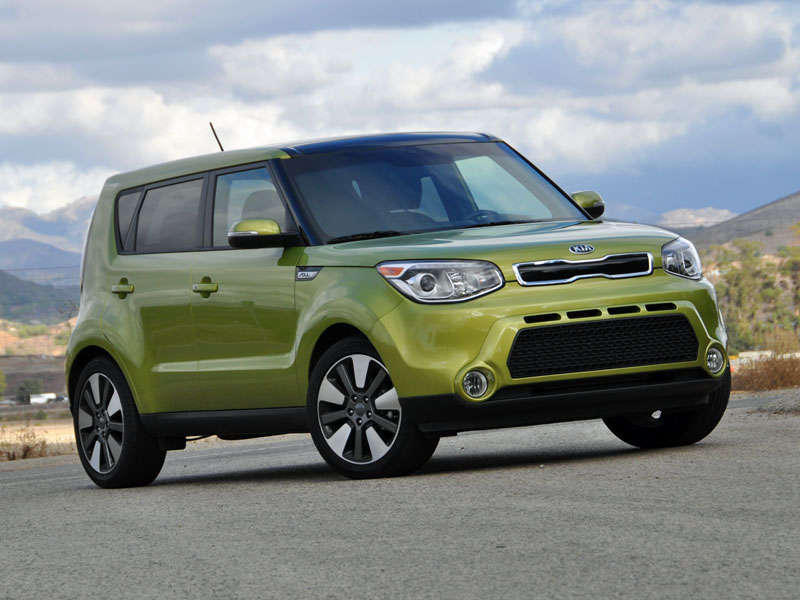
2014 Kia Soul Road Test and Review: Final Thoughts
The 2014 Kia Soul looks the same, but it really isn’t. All grown up, civilized, refined, and filled with surprise-and-delight details, the new Soul isn’t perfect, but it’s close enough that it deserves very careful consideration if you’re looking for an affordable automotive equivalent to a Swiss Army Knife.
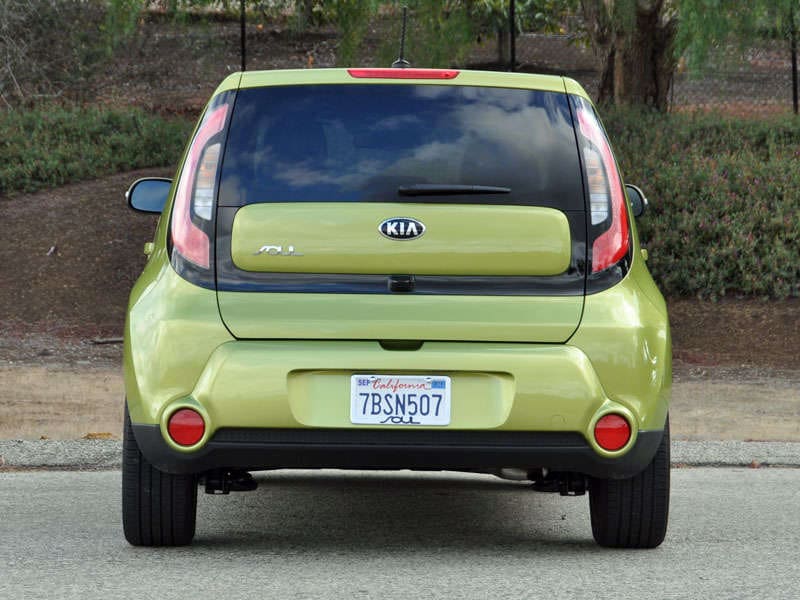
2014 Kia Soul Road Test and Review: Pros and Cons
- Fun to drive
- Lots of personality
- Quality look and feel
- Surprise-and-delight details
- Impressive UVO infotainment system
- Roomy passenger compartment
- Promising crash-test scores
- Excellent warranty
- Brake pedal response
- Disappointing fuel economy
- Rear seat comfort (not space)
- Lacks modern safety technology
Kia supplied the vehicle for this review
2014 Kia Soul Exclaim photos by Christian Wardlaw
